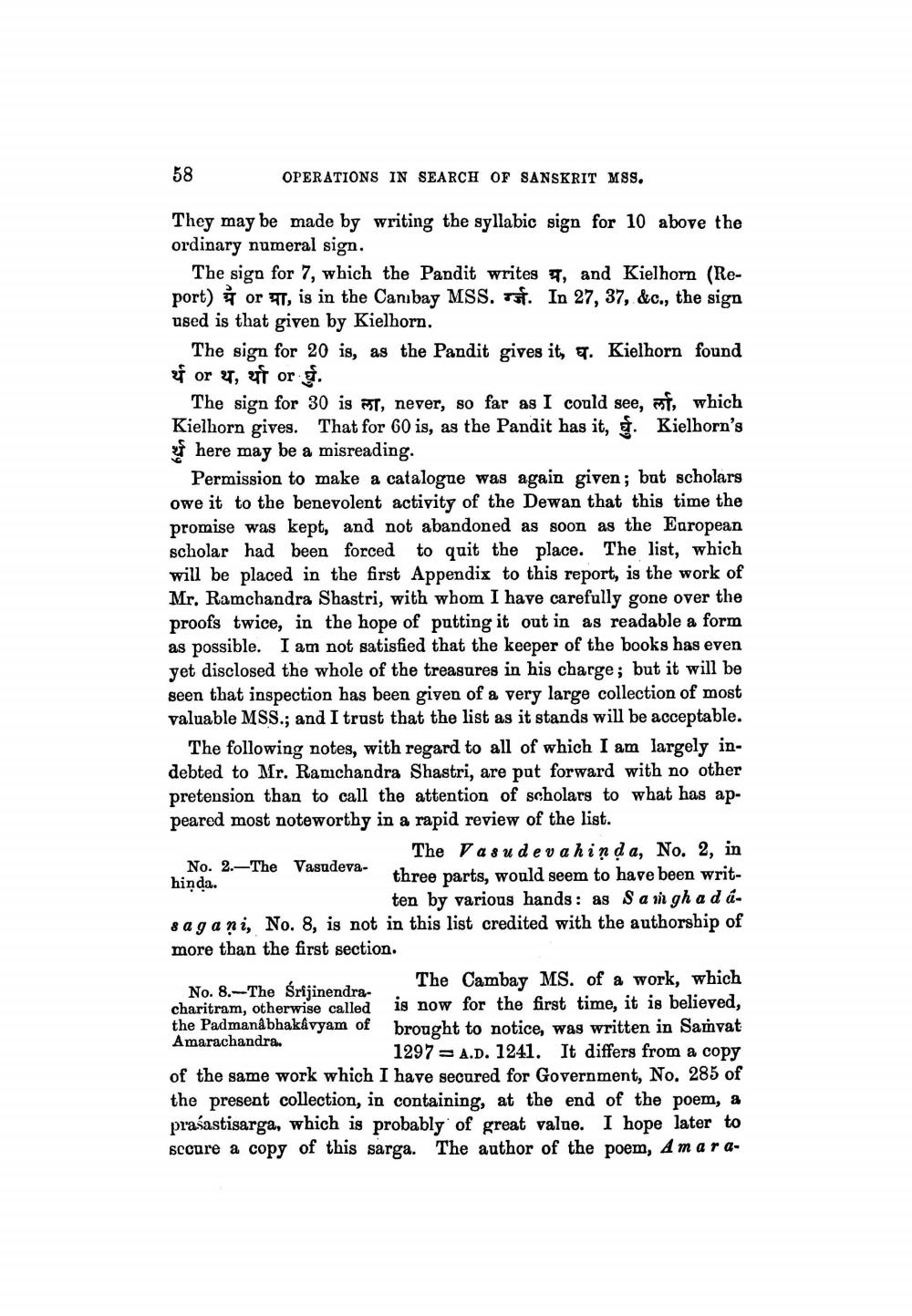________________
58
OPERATIONS IN SEARCH OF SANSKRIT MSS.
t
They may be made by writing the syllabic sign for 10 above the ordinary numeral sign.
The sign for 7, which the Pandit writes , and Kielhorn (Report) or T, is in the Canıbay MSS. f. In 27, 37, &c., the sign used is that given by Kielhorn.
The sign for 20 is, as the Pandit gives it, e. Kielhorn found र्थ or थ, O or घु.
The sign for 30 is , never, so far as I could see, mf, which Kielhorn gives. That for 60 is, as the Pandit has it, . Kielhorn's
here may be a misreading.
Permission to make a catalogue was again given; but scholars owe it to the benevolent activity of the Dewan that this time the promise was kept, and not abandoned as soon as the European scholar had been forced to quit the place. The list, which will be placed in the first Appendix to this report, is the work of Mr. Ramchandra Shastri, with whom I have carefully gone over the proofs twice, in the hope of putting it out in as readable a form as possible. I am not satisfied that the keeper of the books has even yet disclosed the whole of the treasures in his charge; but it will be seen that inspection has been given of a very large collection of most valuable MSS.; and I trust that the list as it stands will be acceptable.
The following notes, with regard to all of which I am largely indebted to Mr. Ramchandra Shastri, are put forward with no other pretension than to call the attention of scholars to what has appeared most noteworthy in a rapid review of the list.
The Vasudevahinda, No. 2, in No. 2.-The Vasudevahinda.
three parts, would seem to have been writ
ten by various hands: as Samgh a dá8 ag ani, No. 8, is not in this list credited with the authorship of more than the first section.
The Cambay MS. of a work, which No. 8.--The Srijinendracharitram, otherwise called is now for the first time, it is believed, the Padmanabhakavyam of brought to notice, was written in Samvat Amarachandra.
1297 = A.D. 1241. It differs from a copy of the same work which I have secured for Government, No. 285 of the present collection, in containing, at the end of the poem, a prasastisarga, which is probably of great value. I hope later to sccure a copy of this sarga. The author of the poem, Amara




